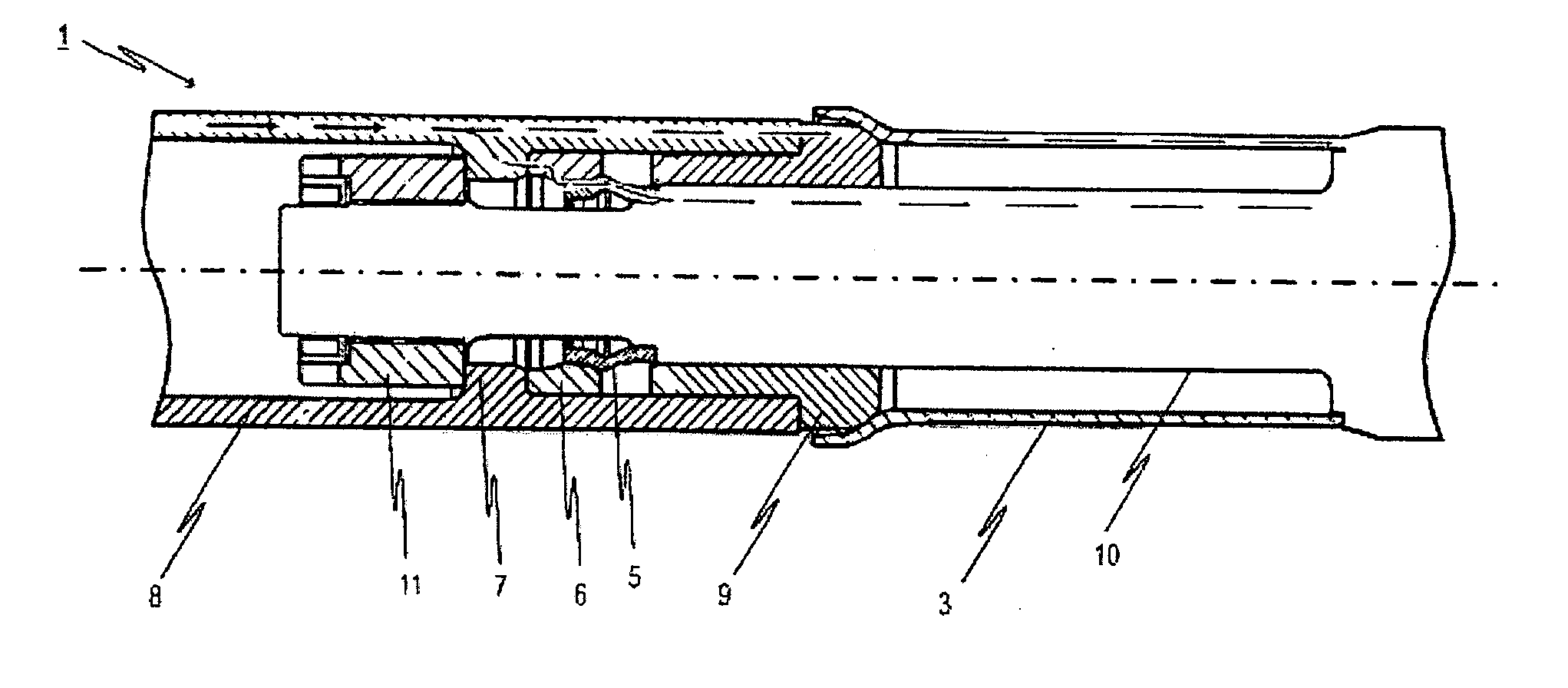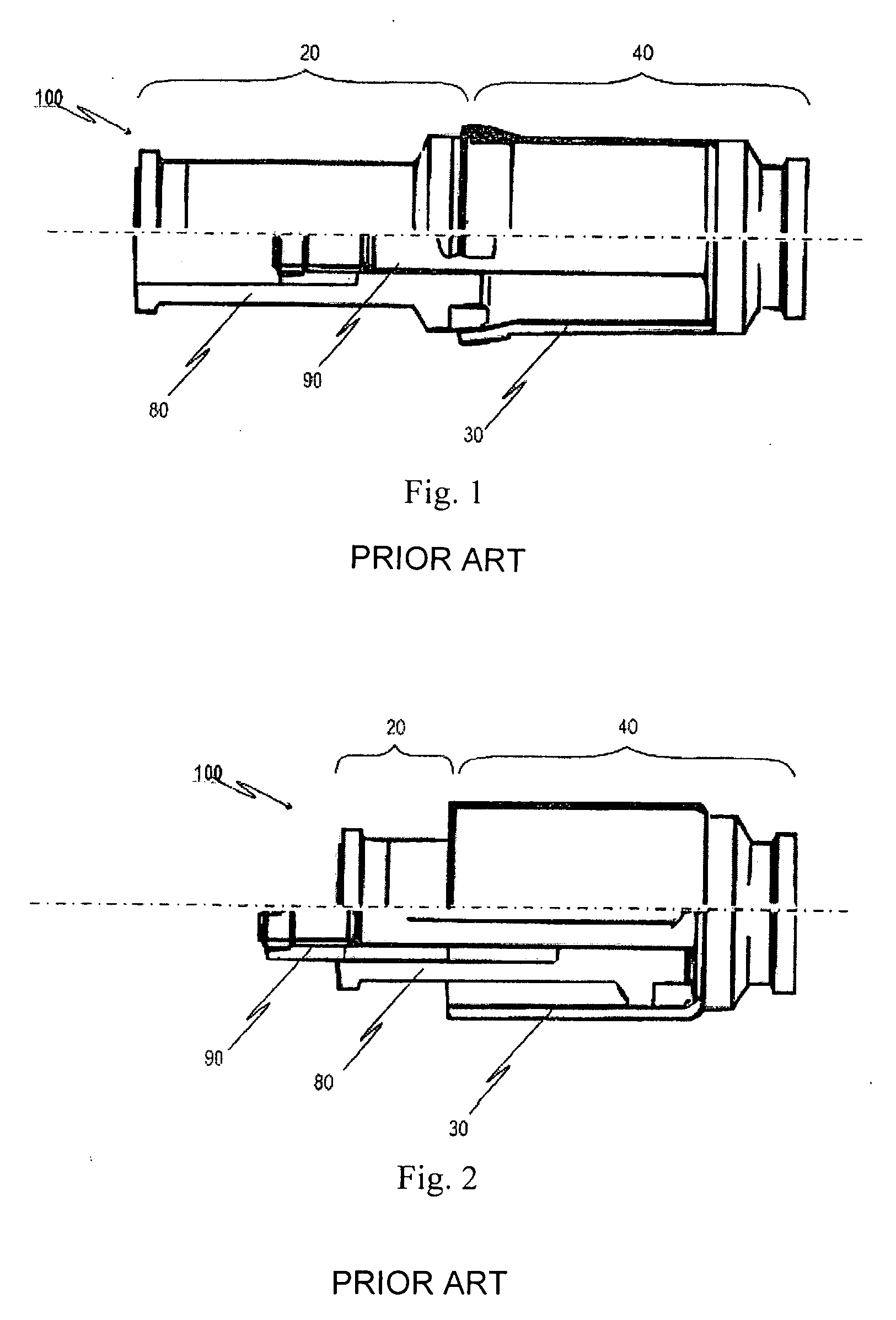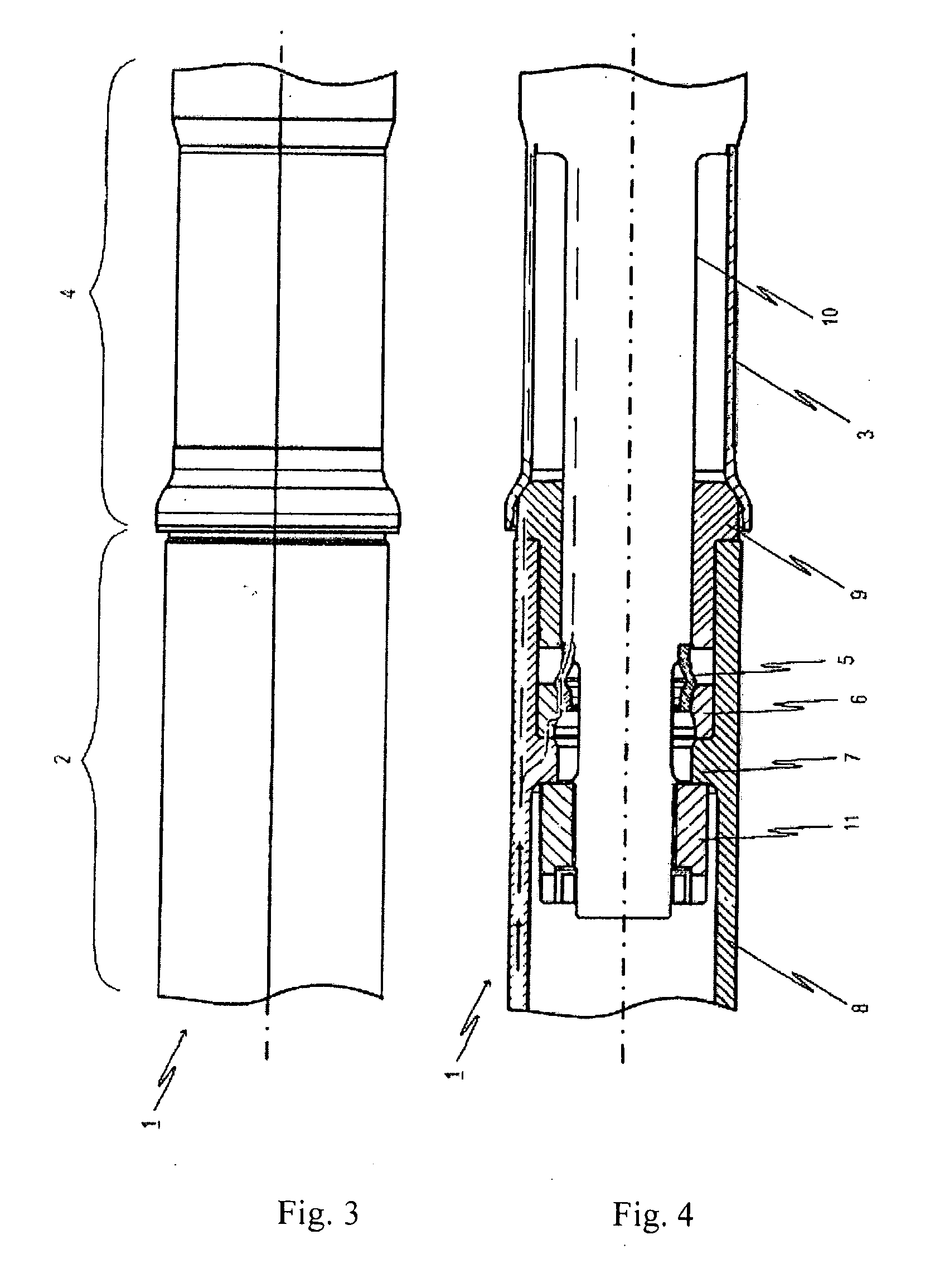Energy dissipation device with elevated action force
a technology of energy dissipation device and action force, which is applied in the direction of spring/damper, vibration damper, railway components, etc., can solve the problems of insufficient dissipation of incident energy by the attractive and impact device, exposed to extreme stress, damaged or even completely destroyed,
- Summary
- Abstract
- Description
- Claims
- Application Information
AI Technical Summary
Benefits of technology
Problems solved by technology
Method used
Image
Examples
Embodiment Construction
[0042]FIG. 1 shows an energy dissipation device 100 from the state of the art, where the lower half of the energy dissipation device 100 is represented in partial section. The energy dissipation device 100 comprises a first force-transferring element 20, a second force-transferring element 40, and an energy dissipation element 30 which is formed here as a deformation tube. The force-transferring elements 20, 40 are connected to one another via the energy dissipation element 30 in a force-locking manner such that tractive and impact forces can be transferred in the longitudinal direction of the energy dissipation device 100. In the transfer of the forces the corresponding force flow runs nearly completely through the energy dissipation element 30 integrated in the energy dissipation device 100. The first force-transferring element 20 has a first supporting body 80 which is embodied here as a tubular element. The second force-transferring element 40 has a second supporting body 90 emb...
PUM
 Login to View More
Login to View More Abstract
Description
Claims
Application Information
 Login to View More
Login to View More - R&D
- Intellectual Property
- Life Sciences
- Materials
- Tech Scout
- Unparalleled Data Quality
- Higher Quality Content
- 60% Fewer Hallucinations
Browse by: Latest US Patents, China's latest patents, Technical Efficacy Thesaurus, Application Domain, Technology Topic, Popular Technical Reports.
© 2025 PatSnap. All rights reserved.Legal|Privacy policy|Modern Slavery Act Transparency Statement|Sitemap|About US| Contact US: help@patsnap.com



